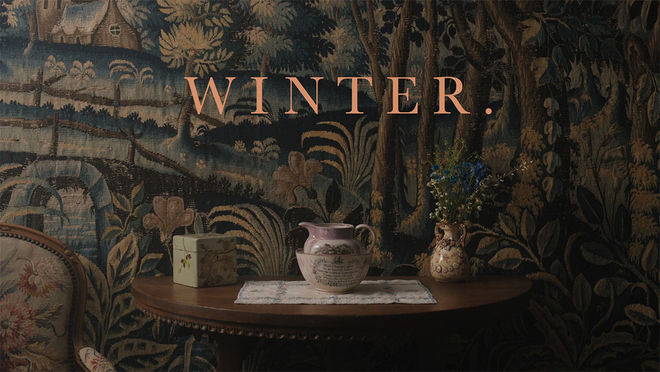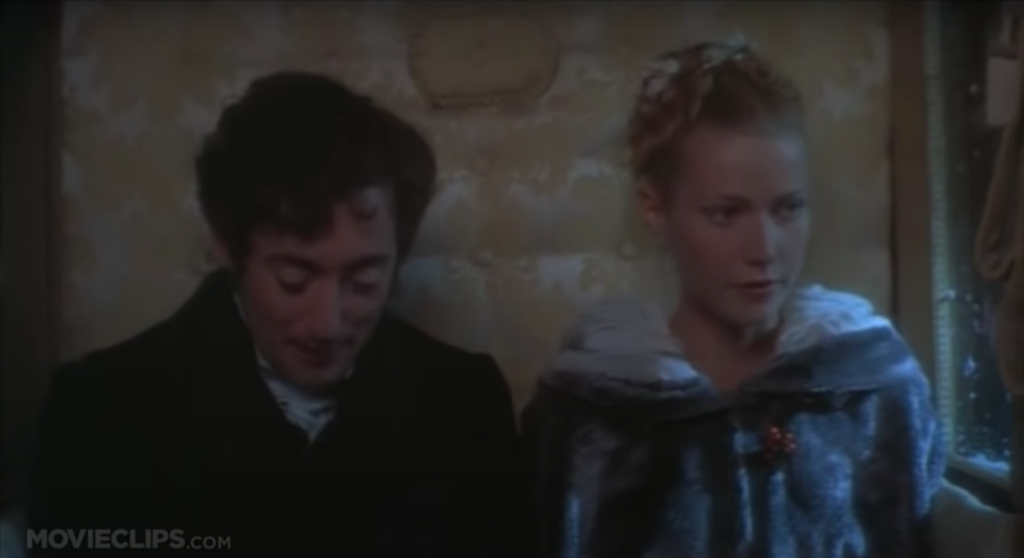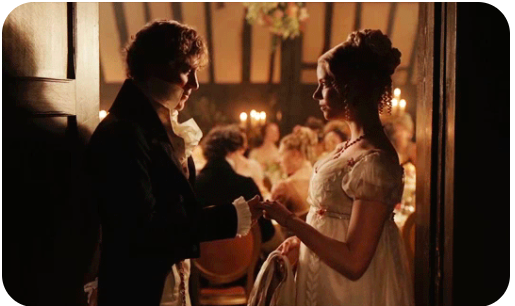“A Holly Jolly Christmas”: Oppositional Binaries in McGrath and de Wilde’s Emma
By Madeline Scully

Both Douglas McGrath and Autumn de Wilde seize upon the holiday scenes in Emma (1815), the only Austen novel with a Christmas scene. Each film’s Christmas scene display the cultivation of relationships and community-building. However, in their respective representations of Emma and Mr. Elton (McGrath) and Emma and Mr. Knightley (de Wilde), the movies underscore binary and oppositional relationships. In these relationships a mirroring occurs, positioning Mr. Knightley and Mr. Elton against each other with Emma as an anchoring force—all against the backdrop of Christmas. In both films, Christmas becomes a kind of oppositional holiday, one that brings out the combativeness of others, not one that creates relationships among them. Both Mr. Elton and Mr. Knightley are vying for Emma’s affection and their combativeness is reflective of this desire to strengthen their relationship with a particular member of their community.
Douglas McGrath’s 1996 film introduces what I am calling an oppositional binary. I am using this term to refer to how characters are positioned in relation to each other in a way that entrenches their contradictory natures. In McGrath’s film, it is Emma and Mr. Elton that are in this dynamic. Throughout the Christmas scene and the proposal, they operate as if they are mirror images. His continual and oppressive checking on her throughout the evening disrupts her community connections, conversations with Mr. Weston and Mr. Knightley, and results in a severing of their friendship after the failed proposal.
The visual element of their interactions in the carriage during the proposal lends itself to a binary understanding of their relationship. Their physical movements conclude in both Emma and Mr. Elton staring out opposite windows after she refuses him, a physical action that is carried out through the rest of the film. This oppositional interaction is reflected in other interactions, both in how Emma and Harriet interact with Mrs. Elton and how the male characters interact with Emma. The opposition created between Emma and Mr. Elton at Christmas results in a deeply entrenched community divide, cementing what began as community disruption for Emma into something concrete for the entirety of Highbury.


Autumn de Wilde’s Emma. (2020), treats oppositional binaries much differently than McGrath’s because although Emma and Mr. Elton are still diametrically opposed, the proposal scene is less physically dynamic, though there is a similar sense of foreshadowing. After Mr. Elton storms out of the carriage his actions in the rest of the film follow a similar structure of removal and avoidance.The interactions that are most oppositional in this film are those between Emma and Mr. Knightley. After conversations with Mr. Knightley Emma is frequently depicted sitting on the window ledge outside her bedroom. This boundary foreshadows the transition she will soon make between the natal home and the marital home—she is simultaneously fighting with her future husband, retreating home, and watching for him in anticipation. Halfway through the film this opposition comes to a head when Mr. Knightley and Emma form an alliance in the midst of the drama of family Christmas, something most viewers can relate to. The tension of Christmas thus highlights how one can simultaneously use connection when it suits you, for example family holidays, but in other settings ignore it, in the way that Mr. Knightley constantly talks down to Emma.
Emma is in many ways a character invested in oppositional relationships: a young woman bent on imposing her idea of what others want on them. In the process she ignores the desires of others, and her own, in the pursuit of what she believes to be the optimal result. In Douglas McGrath’s and Autumn de Wilde’s films, we see two different sides of Emma and her relationships. In McGrath’s, we see the oppositional relationship of Mr. Elton and Emma, colored by the deep-seated jealousy Mr. Elton feels towards Mr. Knightley. In de Wilde’s, we see how an alliance can be formed in the midst of an oppositional relationship. In both films Christmas serves as a backdrop, a holiday that brings out the combativeness and competition of the characters, not a holiday that brings out the cheer and celebration that might be expected. That’s not to say Christmas in Emma is not celebrated, it just might be a more contentious celebration than is expected. I think Christmas is treated in this way in the films because of the way Emma engages with her own communities, Emma engages in charity and community-building from her self-centered desire for a particular desire for a particular result, and this is reflected in the way that the directors depict this season of community and family tension.
Works Cited:
Austen, Jane. Emma. Edited by Fiona J. Stafford, Penguin Books, 2003.
Emma. Directed by Autumn de Wilde, Focus Features, 2020.
Emma. Directed by Douglas McGrath, Miramax Films, 1996.



Social Media